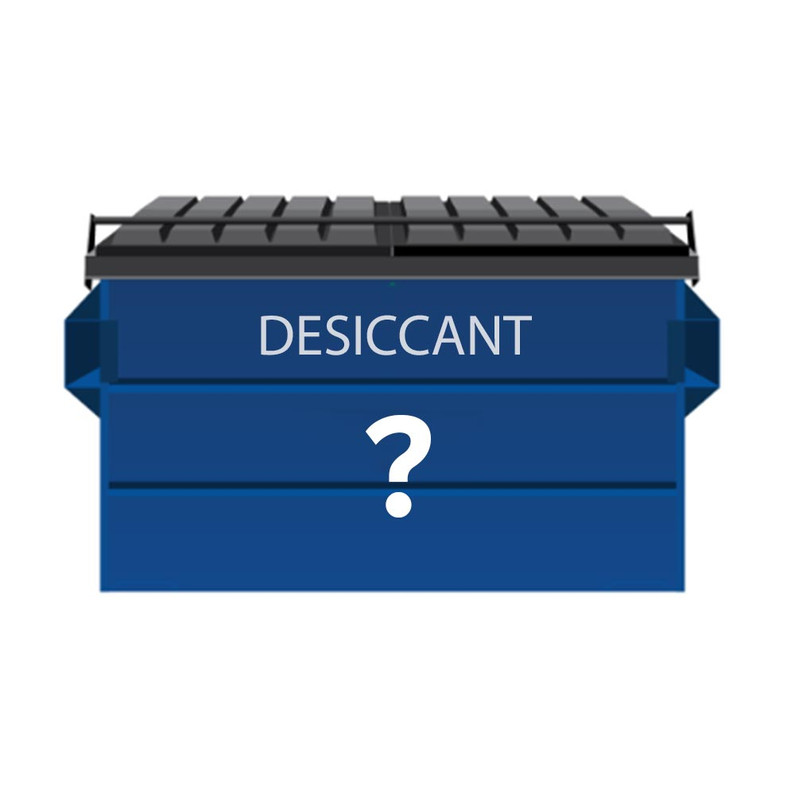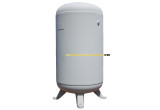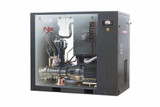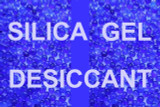How To Properly Dispose Of Desiccants
When your desiccant is all used up, it can be tricky to figure out how to dispose of it. Sometimes these desiccants can not only adsorb moisture from compressed air, but also oil and other potentially hazardous materials. There are several types of desiccants, including silica gel, clay, calcium oxide, activated alumina, and molecular sieve, and each type may need to be disposed of in a specific way. Here are some general guidelines for disposing of different types of desiccants:
- Silica gel: Silica gel is a common type of desiccant that is found in small packets and is often used to adsorb moisture in food, electronics, and other products. It is non-toxic and can be disposed of in the garbage. However, if the silica gel packets are contaminated with hazardous materials, they should be disposed of according to local regulations. Silica gel used with a compressed air dryer should be checked for contaminants before discarding in a landfill.
- Clay: Clay desiccants, also known as montmorillonite, are commonly used in shipping containers and other packaging applications. If uncontaminated, clay desiccant can be disposed of in the garbage, but it is important to check with local regulations to ensure that they are not considered hazardous waste.
- Calcium oxide: Calcium oxide, also known as quicklime, is a highly reactive substance that is used as a desiccant and a pH adjuster. It should be disposed of according to local regulations, as it can be hazardous if not handled properly.
- Dry-O-Lite: Van Air Systems Dry-O-Lite desiccant is a special deliquescent desiccant tablet which slowly dissolves as it absorbs moisture from compressed air or gas. Dry-O-Lite desiccant is environmentally friendly, but check your desiccant dryer for any signs of contamination.
- Activated alumina: Activated alumina is a type of desiccant that is made from aluminum oxide and is commonly used to adsorb moisture and other contaminants in compressed air and gas streams. It can be disposed of in the garbage, but it is important to follow local regulations to ensure that it is not considered hazardous waste.
- Molecular sieve: Molecular sieve is a type of desiccant that is made from beads of synthetic zeolite and is commonly used to adsorb moisture and other gases. It can typically be disposed of in the garbage, unless there is a chance the molecular sieve has adsorbed hazardous substances, metals, or compounds of sulfur or nitrogen. Remember that molecular sieves can release chemical compounds back into the air, especially in humid conditions, and even after they've been regenerated. Check your local laws to be safe!
If there are chemicals like oil in your compressed air system, it is important to know what these chemicals are and the potential hazards they pose. Key sources of compressed air hazardous waste include condensate, used filter elements, various service parts, and you guessed it - desiccant.
In countries like the United Kingdom, all desiccants are considered hazardous waste, even desiccants used in an oil-free compressed air system. It's a good idea to always check and follow local, state, and federal regulations to make sure everything's done by the book. If you are unsure how to dispose of a specific type of desiccant, you should contact your local waste management agency or refer to the desiccant manufacturer for more information.
Recent Posts
-
Popular Sizes of Vertical Air Receiver Tanks
Sizing and deciding on the best air receiver tank for your compressed air application can be conf …May 05, 2024 -
Spring Cleaning Tips for Your Air Compressor System
Spring is here, and it's the perfect time to give your air compressor system a thorough maintenan …Mar 25, 2024 -
How is Silica Gel Desiccant Used with Compressed Air?
Silica gel desiccant is an essential component in the compressed air and gas industry for its moi …Mar 16, 2024




